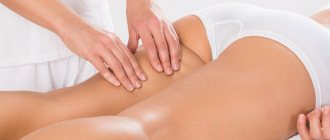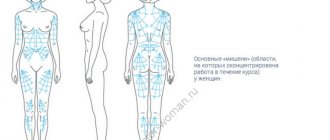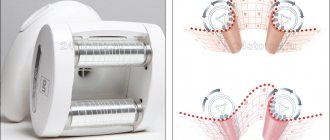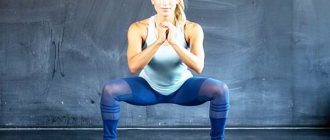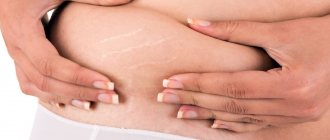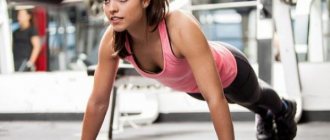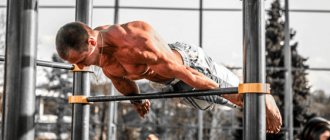Lymphatic drainage massage is a “spring cleaning” and detox for the body. Together with lymph, harmful substances, excess water, and decay products are removed from our body. A sedentary lifestyle interferes with the movement of lymph due to compression of blood vessels. The intercellular space is filled with toxins, a feeling of fatigue appears, the body's protective functions are weakened, and metabolism is disrupted. A course of lymphatic drainage massage restores tone and energy, strengthens the immune system, and helps to become slimmer.
What is lymph and why is it important?
Lymph is a clear, yellowish liquid that is a type of connective tissue in the body. It flows through the lymphatic system from bottom to top, from the tips of the fingers and toes to the thoracic lymphatic duct.
Lymph returns proteins, water, salts, toxins, and metabolites from tissues to the blood for elimination. Lymphatic fluid is involved in the formation of immunity, protection from germs and viruses, and recovery from intoxication. Lymph is also released on fresh wounds and abrasions. The lymphocytes it contains protect the damaged area from infections.
Lymphatic drainage massage accelerates the movement of lymph throughout the body. The liquid begins to circulate faster, removing waste products from the intercellular space.
Main indications for the procedure
A course of lymphatic drainage massage is prescribed for the following conditions:
- Constant lethargy, increased fatigue.
- Frequent lingering colds.
- Pain throughout the body.
- Excess weight, cellulite, decreased skin turgor.
- Varicose veins, poor circulation of the extremities.
- Insomnia.
- Postoperative scars, stretch marks.
- Swelling, appearance of dark circles under the eyes.
- Acne, acne, papillomas, age spots.
Lymphatic drainage massage of the body stimulates the movement of lymph from the organs to the central lymphatic vessels that flow into the thoracic lymphatic duct and the inferior vena cava. The accumulated liquid is mechanically pushed through, breaking the stagnation. Lymph begins to circulate freely, saturating body tissues with oxygen and nutrients.
What is lymphatic drainage massage and who needs it?
Lymphatic drainage massage is a physiotherapeutic session aimed at removing fluid (relieving swelling) and harmful substances. The manipulations are based on enhancing lymph flow: the higher the speed, the faster the body gets rid of waste products and is saturated with oxygen. Acceleration is achieved by massaging the lymph nodes, a painless and discomfort-free procedure.
A course of lymphatic drainage massage for the face and/or body is indicated:
- with swelling of the skin;
- varicose veins;
- cellulite;
- fat deposits;
- weakening of tone;
- metabolic disorders;
- the presence of scars, scars, stretch marks;
- weak immunity;
- disruption of lymph and blood flow.
It is believed that weekly such a massage helps maintain skin tone for a long time without any cosmetic surgery.
How are lymphatic drainage massage procedures performed?
The physiotherapeutic procedure is painless and lasts about an hour. The session consists of three stages:
- Preparation. At this stage you need to relax your body. For greater effectiveness, before the massage the patient needs to drink up to 1 liter of warm, clean water. Before starting the procedure, the massage therapist applies cream or oil to the patient’s skin, then begins to work on the lines along which the lymph nodes are located. If a special device is used, the specialist preheats the soft tissues with his hands.
- Impact on lymph nodes. Lymphatic vessels are more fragile than blood vessels and require a careful approach. The specialist’s movements should be smooth, soft, and wave-like. All massage techniques are performed strictly along the lines of lymph flow in the direction of the lymph nodes.
- Completion. After finishing the lymphatic drainage massage, you can dry yourself with a towel to remove any remaining cream from the body. The patient needs to rest for about 10 minutes before leaving the couch. A sudden rise can cause dizziness.
In order for massage sessions to bring maximum benefit, the course of treatment is supplemented with light lymphatic drainage exercises, it is recommended to drink enough clean water and eat right. Body mobility stimulates the lymphatic system, helps fluid circulate faster, oxygenating tissues with nutrients.
Main areas of influence
During the procedure, the specialist moves along a trajectory from the wrist to the armpit, from the neck to the armpits, from the abdomen to the groin, from the foot to the groin.
The masseur begins with a massage of the subclavian area, smoothly moving to the groin area through the solar plexus and abdomen. This is followed by lymphatic drainage massage of the back and lumbar region. Afterwards the area of the collarbones, elbows and armpits is worked on. Each massage movement is repeated at least five times.
During a lymphatic drainage facial massage, a specialist massages areas near the ears, forehead, under the jaw, and near the sinuses. Movements in the facial area are performed gently and carefully so as not to damage the skin.
Contraindications
Any procedure has contraindications. Lymphatic drainage massage is no exception. It is not recommended to do it if you have:
- skin diseases;
- burns, purulent inflammations;
- pathologies of the endocrine system;
- malignant tumors;
- diseases of the cardiovascular system;
- diabetes mellitus;
- thrombophlebitis of the lower and upper extremities;
- acute inflammatory processes of infectious diseases.
Massage is not recommended for pregnant women.
Important!
Before going to a beauty salon for a procedure or doing lymphatic drainage massage yourself at home, you should consult with your doctor.
Lymphatic drainage massage techniques
Lymphatic drainage massage techniques are divided into three categories according to intensity:
- Superficial lymphatic drainage massage for small vessels. The massage therapist preheats the soft tissues, preparing them for more intense effects. Then, with light circular movements, it works on all areas, facilitating the movement of lymph.
- Deep effect on muscle tissue. More intense and in-depth massage techniques stimulate blood circulation, increase muscle tone, dilate blood vessels, which helps lymph circulate freely through the intercellular spaces. This technique reduces body volume and improves skin condition.
- Point effect on the projections of the lymph nodes. This is a technique for performing hardware effects using microcurrents, pressotherapy or LPG massage.
Each lymphatic drainage massage technique has a targeted effect on the lymph flow. Depending on the problem areas of the patient’s body, the following techniques are used:
- Lymphatic drainage massage for swelling and poor circulation. The masseur makes rhythmic but smooth movements, stroking, working in depth on the muscle tissue in the neck, back and legs. Indications for performing lymphatic drainage massage using this technique: cellulite, swelling, varicose veins.
- Anti-cellulite technique for “orange peel” and hypertrophy of fat deposits. The lymphatic drainage body massage procedure is performed locally in problem areas. Relaxation of muscles and tissues helps to loosen fatty tissue and remove excess fluid. By improving blood circulation, the skin tightens, becomes smoother and more elastic.
- Lipolytic technique for reducing subcutaneous fat. This technique eliminates local body defects, for example, “ears” on the hips. The massage therapist smoothly moves from gentle to intense effects aimed at the correction area.
- Modeling lymphatic drainage technique for figure correction. The intensity of the massage is selected individually for each patient. No painful techniques are used during the session. All movements of the specialist are soft, smooth, promoting better lymph circulation.
- A lifting technique for restoring skin tone after childbirth, surgery or sudden weight loss. The lymphatic drainage effect enhances tissue regeneration, accelerates metabolism, and stimulates the natural production of collagen.
Manual and hardware massage techniques complement each other. Manual treatment is suitable for sensitive areas of the body; the equipment helps to effectively work the legs and lumbar region.
Lymphatic drainage techniques
Types of lymphatic drainage according to intensity:
1
Surface. Performed at the preparatory stage to warm up the skin and stimulate capillaries. During superficial massaging, blood circulation improves, which facilitates further effects on blood vessels.
2
Deep. It is a study of muscles and inner layers of tissue. During intense exposure, muscle tone increases and blood vessels dilate. Lymph begins to circulate freely throughout the body, freeing the intercellular space from accumulated toxins.
3
Spot. It is a hardware treatment of lymph nodes using microcurrent, pressotherapy, and LPG.
All techniques are effective and can be combined with each other to solve a specific problem. The intensity of exposure is selected based on health status, sensitivity, pain threshold and other factors.
Manual lymphatic drainage
Manually, the doctor acts on the subcutaneous fat tissue. To reduce the permeability of capillary walls, a compression bandage (bandaging) can be used. Such manipulation allows you to act directly on the lymph flow and minimally injure the upper layers of the skin.
Manual techniques are used to work on sensitive areas of the body, as an aid in preparation for the hardware technique.
Hardware lymphomassage (pressotherapy)
The patient puts on a special protective suit. Cuffs are placed on the treated areas to create air pressure. The procedure increases blood circulation and lymph outflow. The technique is used in the fight against excess weight, for body correction, and relaxation after grueling workouts. Pressotherapy and lymphatic drainage are also used in the rehabilitation process after drug therapy.
Vacuum lymphatic drainage
The intercellular space in tissues is treated by suctioning the skin using a device. Vacuum lymphatic drainage affects the outer layers of the epidermis and subcutaneous fat. Activation of processes in cells leads to increased metabolism. The hardware technology affects the lymphatic and venous vessels.
Recommendations before and after the procedure
To benefit from lymphatic drainage massage, follow these recommendations:
- During the entire course, do not drink alcohol, it is advisable to quit smoking;
- do not drink a lot of liquid in the evening;
- conduct massage sessions in the afternoon, a few hours after lunch or dinner;
- Before the session, take a shower and monitor the condition of your skin.
Immediately after the procedure it is recommended:
- lie on the couch for about 10 minutes, rise from it smoothly;
- drink up to 500 ml of warm clean water;
- make a lymphatic drainage wrap for better lymph outflow.
If you strictly follow all the rules, then after the first session you can feel an improvement in your well-being. After 6-12 procedures, headaches and constant fatigue may go away, the skin will become smoother, elasticity will appear, and metabolic processes in tissues will improve.
Lymphatic drainage massage of the back relieves pain in the spine, restores muscle mobility, and relieves the feeling of stiffness. This procedure will be especially useful for those who spend a lot of time sitting and suffer from headaches.
Contraindications and side effects
Lymphatic drainage massage has contraindications:
- skin diseases;
- acute thrombophlebitis;
- increased fragility of blood vessels;
- diseases of the lymphatic and circulatory systems;
- the presence of cancerous and benign tumors;
- pregnancy, lactation period;
- menstruation;
- infectious diseases;
- diabetes.
Before signing up for a course of lymphatic drainage massage, seek advice from a specialist so that the procedures do not aggravate the symptoms of current diseases.
A massage session is associated with intense impact on the skin of the body, so bruises may appear the next day after the procedure. Lymphatic vessels are very fragile; they are slightly damaged during lymphatic drainage massage, but are quickly restored.
After lymphatic drainage massage, the urge to urinate becomes more frequent. The procedure activates the removal of excess fluid from the body. This is how the lymphatic system is naturally cleansed of stagnant toxins and decay products.
Contraindications for lymphomassage
Any physiotherapeutic procedure, including lymphatic drainage massage of the face or body, has contraindications. In this case it is:
- acute stage of thrombophlebitis;
- skin diseases (separate group);
- fragile vessels;
- diseases of hematopoiesis and lymphatic system;
- oncology;
- headache of unknown origin;
- renal failure;
- diabetes of any type;
- infections;
- critical days in women, pregnancy, lactation.
Stages, frequency and number of sessions
Lymphatic drainage is carried out in courses, the duration of which is determined by a specialist. Usually this is 3-12 sessions, depending on the problem and the degree of its neglect. Between courses, if more than one is needed, a break of 3-6 months is taken. The interval between sessions is 1 day. The procedure is carried out in three stages:
- Preparation. Cleansing the skin, applying cream (oil, gel), manual warming (before hardware exposure);
- Execution of technique. The use of massage techniques (classical) to move the lymph flow to the lymph nodes. Duration – 30-120 minutes;
- Ending. Cleansing the skin from special products, moisturizing with cream or milk.
It is required to consume fluids at least as prescribed. Lymphatic drainage wraps after the session will enhance and consolidate the results of the massage.
At the IntegraMed CDC (formerly NDC), you can undergo a full course of lymphatic drainage massage under the supervision of qualified specialists. Sign up for a course with our operators.
Lymphatic drainage massage in
VIP Academy specialists practice manual lymphatic drainage massage using superficial, internal, and deep lymphatic drainage techniques. The procedures last at least 1 hour. During this time, the massage therapist gradually moves over all parts of the body from the back to the legs, carefully working each area.
To make an appointment at a multifunctional medical center or get advice from our lymphatic drainage massage specialists, leave a request in a convenient way:
- By phone.
- By email
- Using the call order form on the website academy-vip.com.

